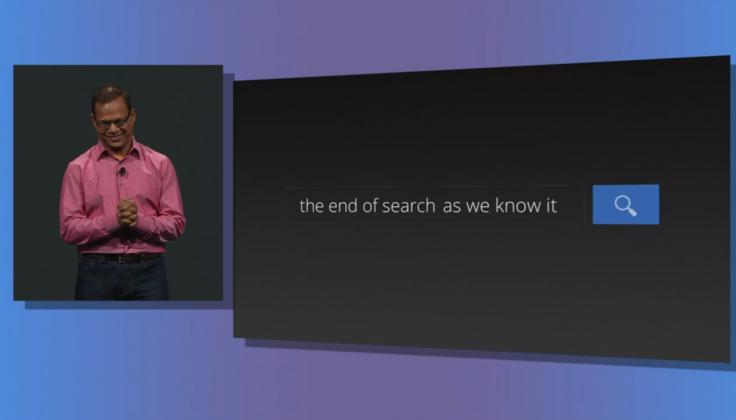Google I/O: Google Unifies Services With Google Now, Voice Search And Knowledge Graph
At Google’s I/O conference in San Francisco, Calif., on Wednesday, there was a lot of talk about music streaming, phones and even video games. But Google didn’t forget its search engine, the company’s bread and butter that made it the giant it is today.
Google Senior Vice President and software engineer Amit Singhal took the I/O stage with a presentation that read “the end of search as we know it.” Singhal introduced an expansion of the knowledge graph that will help Google anticipate future searches and questions.

For example, if someone searches for the population of India, the results will come paired with a graph showing population growth over time. Google will also compare this graph with population growth in U.S. and China, because these are the countries most compared to India. These features will start rolling out today.
Google is also expanding the knowledge graph to new languages: Polish, Turkish, simplified Chinese and traditional Chinese.
The conversational Google search that has been so popular on Android devices is also making its way to desktops. While users can already click a microphone icon and search Google with voice, they are now introducing “hot words” to desktop Google searches. Users can just say, “OK Google,” and Google will activate the conversation search.
The interface is an obvious reference to Google Glass, and the reference elicited laughs and applause from the I/O audience.
Google will also expand Google Now to make search better at anticipating. Users can now set reminders in Google Now to show up at the right place and right time. Google is also adding cards for public transit, music, TV shows, books and video games.
One of the best features of the entire I/O conference was a demo of the next generation of Google search by Google product manager Johanna Wright. She started by saying “OK Google, show me things to do in Santa Cruz” to her desktop, and Google instantly pulled up popular activities in the town. It then used location detection to provide customized directions and driving time from the I/O conference in San Francisco, and a search for “seafood” pulled up popular restaurants with pictures, reviews and how to make reservations.

Wright also showed the function on mobile, asking her mobile device for height restrictions on the Santa Cruz, Calif., roller coaster. She then pulled up Google Now to show that restaurant reservations had been added automatically, and the card even provided turn by turn directions from the roller coaster to the restaurant. Google Now and voice search also worked with flight times, reading and sending emails, and pulling up specific photo albums from Google+.
Singhal admitted that everything is still in development and will continue to improve, but it’s a sign of what is coming. Google is looking to unite all of its features -- from search to maps and email – into one user interface and spread this seamlessly across all devices.
© Copyright IBTimes 2024. All rights reserved.






















